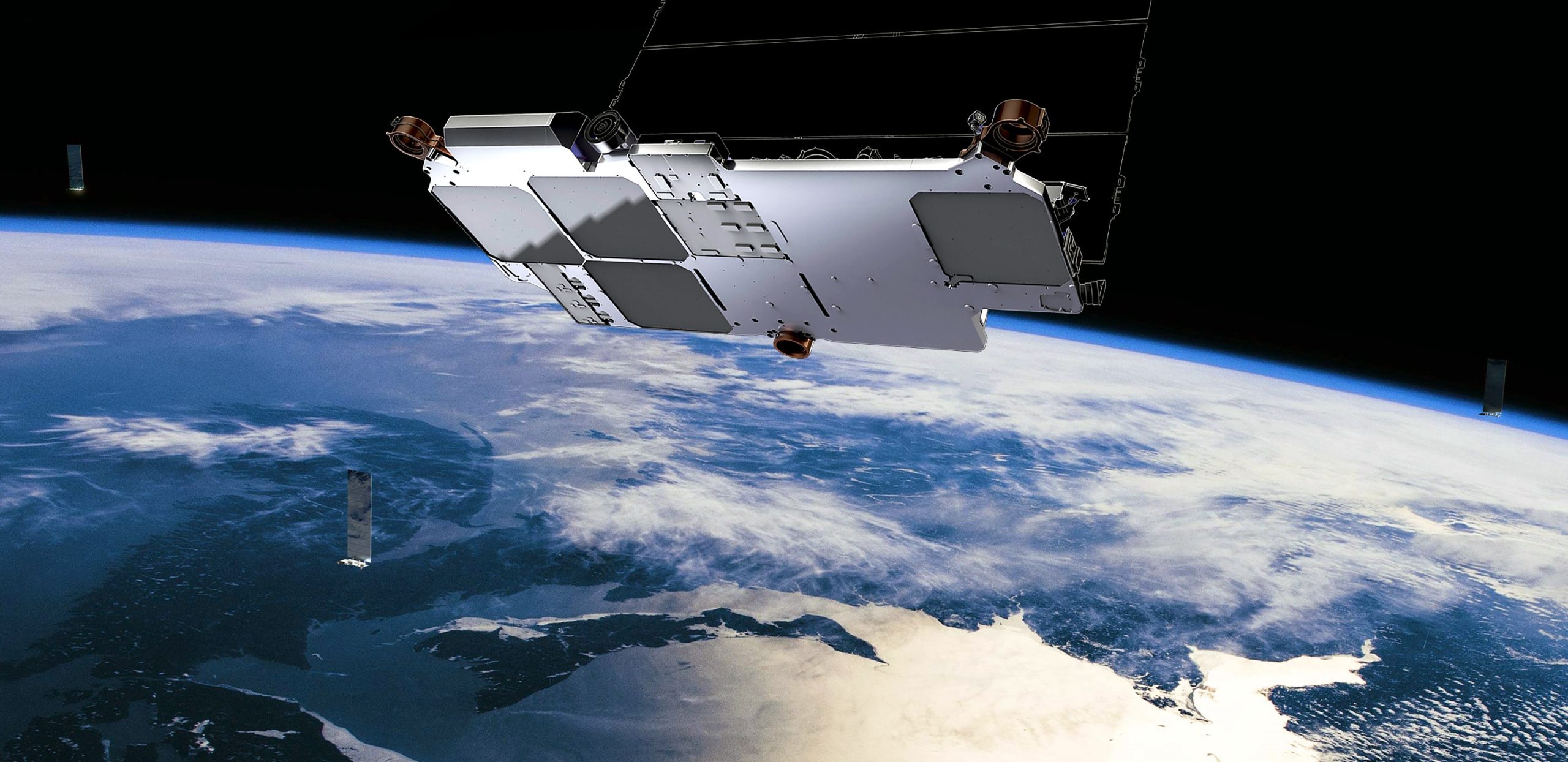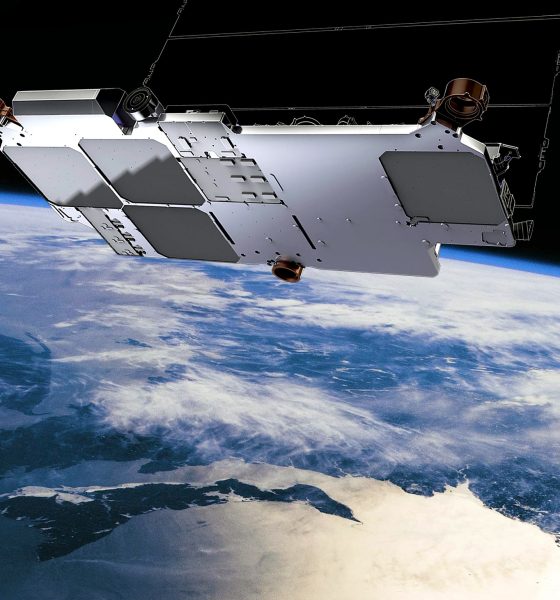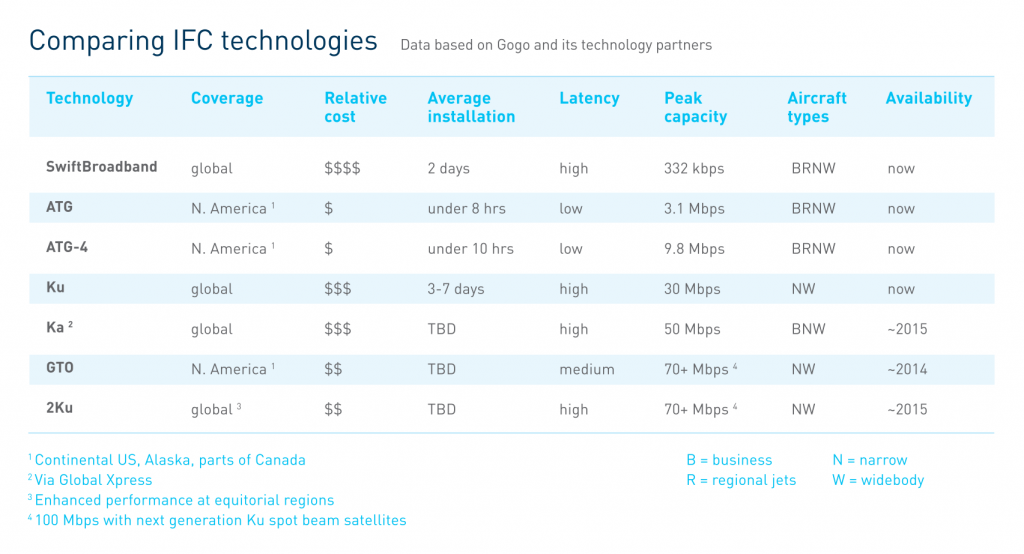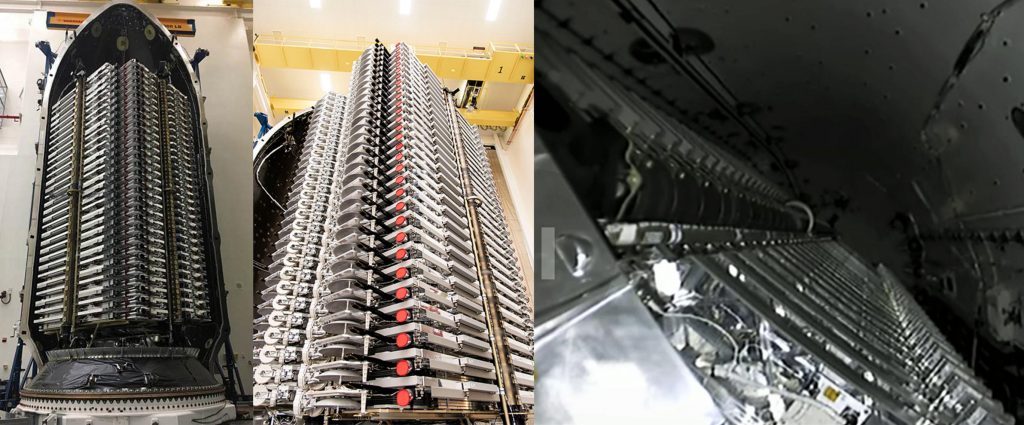

News
SpaceX Starlink job posting signals serious interest in a growing multi-billion dollar market
A new SpaceX Starlink job posting hints that the company is very interested in an established multi-billion dollar market for high-quality satellite internet – a use-case its Starlink constellation should be a perfect fit for.
One of the biggest sources for a recent boom in global demand for satellite broadband services, in-flight connectivity (IFC) is a rapidly growing market well on its way to multi-billion dollar annual revenues within the next few years. Almost anyone with any experience traveling by air is likely familiar with the promises and pitfalls offered by in-flight WiFi, which can often feel extremely convenient and futuristic while still bringing up old memories of DSL internet and flip-phones. Arguably, most – if not all – of the downsides of modern in-flight connectivity and the patchwork addition of onboard servers carrying limited offline entertainment options are caused by technical limitations in the existing IFC ‘pipeline’.
Meanwhile, SpaceX is just a few months into the years-long process of manufacturing and launching a vast constellation of thousands of Starlink internet satellites, designed to blanket every inch of the Earth with high-quality internet service. With internal goals stretching as high as ~40,000 satellites, Starlink could one day offer enough bandwidth to singlehandedly satisfy the internet needs of hundreds of millions – if not billions – of customers worldwide. In the interim, however, how and where SpaceX chooses to commercially deploy its nascent constellation will be critical in its first few years of operations, and in-flight connectivity is one such place where Starlink could theoretically crush existing options and come to dominate the growing market.

A few days ago, SpaceX published its first job posting exclusively dedicated to “aeronautical terminals”, referring to a type of Starlink user terminals (an antenna and associated hardware) optimized for installation on aircraft fuselages. Thanks to an almost $29 million Starlink contract awarded by the US Air Force Research Laboratory (AFRL) contract in 2018, SpaceX has already built and successfully tested aeronautical terminal prototypes on military aircraft, with even more ambitious tests soon to come. As such, it would be reasonable to assume than a new job posting for such terminals would be focused on SpaceX’s military work.
Instead, SpaceX’s February 21st listing explicitly refers to the new position as an opportunity to “[certify] Starlink aeronautical terminals [for] commercial and business jet aircraft…[and] play a critical role in deploying an industry-changing In-Flight Communications (IFC) service”, unequivocally confirming the company’s interest in entering the broader IFC market.

While SpaceX has already launched an incredible 240 Starlink v1.0 satellites in the last two months alone, the company has yet to reveal any specific information about the user terminals customers will use to connect to the orbiting network. Earlier this year, CEO Elon Musk did briefly mention that the terminal would look like a “thin, flat, round UFO on a stick”, while COO and President Gwynne Shotwell stated last year that the terminal would be “beautiful” at Musk’s request. Aside from those comments and a few even older ones, the no-less-critical Starlink component remains a bit of a mystery, although we do know that SpaceX intends to mass produce millions of the devices itself.
Still, SpaceX has made it clear that it’s already testing terminals with some success, noting late last year that it managed to deliver bandwidth of ~610 megabits per second (Mbps) to a US military aircraft through a single flight-optimized terminal. That testing was performed with 60 ‘v0.9’ satellites, meaning that all Starlink satellites launched after May 2019 should be able to offer even more bandwidth thanks to the addition of higher-capacity ‘Ka-band’ antennas.

While much is still unknown, the available details paint a fascinating picture of Starlink’s potential in the IFC market. Driven by unprecedentedly ambitious and strict cost targets, SpaceX already builds, owns, and operates its own Falcon rockets, Starlink satellites, and (soon) Starlink terminals – including variants optimized for consumer, aeronautical, and ground station use. In short, SpaceX is building the most vertically-integrated space-based service in the history of commercial space.

What can effectively be considered a very early pre-alpha of the Starlink satellites, terminals, and network has already demonstrated the ability to deliver bandwidth of more than 600 Mbps to a single in-flight aircraft, at least five times better than the best solutions currently available (~100 Mbps). Thanks to their location in low Earth orbit (LEO), Starlink satellites will also be able to offer latency (the gap between when you click and when something happens) as good as or better than what most people have access to on the ground.
By building and owning every critical aspect of the complex pipeline needed for its Starlink network, SpaceX has full control from start to finish. With Falcon 9 rockets and Starlink satellites, this has meant that SpaceX can reach cost targets that are up to several times cheaper than competing solutions and do so while meeting or beating their technical capabilities. With in-flight connectivity, the rockets, satellites, terminals, and ground infrastructure needed to create a functional network all factor heavily into the prices that can be offered to end-users and as of 2020, there simply isn’t an IFC provider on Earth in a position to compete with the level of vertical integration SpaceX may be able to offer.

If SpaceX can launch several thousand satellites and figure out how to affordably mass-produce unprecedentedly high-performance terminals (still up for debate), it’s safe to say that Starlink is going to run through existing IFC providers like a brick wall. Aside from potentially beating them on cost, Starlink – offering perhaps 600-1000+ Mbps per plane – could theoretically allow 100-200 airline passengers to simultaneously stream videos, browse the web, and even game in flight as if they were on the ground. Existing providers are physically incapable of competing with something like that without extensive infrastructure upgrades.
According to Satellite Markets & Research, the annual revenue of passenger aircraft IFC broke $1 billion for the first time in 2018 and the overall market is expected to be worth at least $36 billion (~$3.5B/year) from 2019 to 2029. Major provider Inmarsat estimates that the IFC market could be worth up to $15 billion annually by 2035. With a bit of luck, SpaceX could easily secure a major portion of that pot within just a handful of years.
Check out Teslarati’s Marketplace! We offer Tesla accessories, including for the Tesla Cybertruck and Tesla Model 3.

Elon Musk
Starlink passes 9 million active customers just weeks after hitting 8 million
The milestone highlights the accelerating growth of Starlink, which has now been adding over 20,000 new users per day.

SpaceX’s Starlink satellite internet service has continued its rapid global expansion, surpassing 9 million active customers just weeks after crossing the 8 million mark.
The milestone highlights the accelerating growth of Starlink, which has now been adding over 20,000 new users per day.
9 million customers
In a post on X, SpaceX stated that Starlink now serves over 9 million active users across 155 countries, territories, and markets. The company reached 8 million customers in early November, meaning it added roughly 1 million subscribers in under seven weeks, or about 21,275 new users on average per day.
“Starlink is connecting more than 9M active customers with high-speed internet across 155 countries, territories, and many other markets,” Starlink wrote in a post on its official X account. SpaceX President Gwynne Shotwell also celebrated the milestone on X. “A huge thank you to all of our customers and congrats to the Starlink team for such an incredible product,” she wrote.
That growth rate reflects both rising demand for broadband in underserved regions and Starlink’s expanding satellite constellation, which now includes more than 9,000 low-Earth-orbit satellites designed to deliver high-speed, low-latency internet worldwide.
Starlink’s momentum
Starlink’s momentum has been building up. SpaceX reported 4.6 million Starlink customers in December 2024, followed by 7 million by August 2025, and 8 million customers in November. Independent data also suggests Starlink usage is rising sharply, with Cloudflare reporting that global web traffic from Starlink users more than doubled in 2025, as noted in an Insider report.
Starlink’s momentum is increasingly tied to SpaceX’s broader financial outlook. Elon Musk has said the satellite network is “by far” the company’s largest revenue driver, and reports suggest SpaceX may be positioning itself for an initial public offering as soon as next year, with valuations estimated as high as $1.5 trillion. Musk has also suggested in the past that Starlink could have its own IPO in the future.
News
NVIDIA Director of Robotics: Tesla FSD v14 is the first AI to pass the “Physical Turing Test”
After testing FSD v14, Fan stated that his experience with FSD felt magical at first, but it soon started to feel like a routine.

NVIDIA Director of Robotics Jim Fan has praised Tesla’s Full Self-Driving (Supervised) v14 as the first AI to pass what he described as a “Physical Turing Test.”
After testing FSD v14, Fan stated that his experience with FSD felt magical at first, but it soon started to feel like a routine. And just like smartphones today, removing it now would “actively hurt.”
Jim Fan’s hands-on FSD v14 impressions
Fan, a leading researcher in embodied AI who is currently solving Physical AI at NVIDIA and spearheading the company’s Project GR00T initiative, noted that he actually was late to the Tesla game. He was, however, one of the first to try out FSD v14.
“I was very late to own a Tesla but among the earliest to try out FSD v14. It’s perhaps the first time I experience an AI that passes the Physical Turing Test: after a long day at work, you press a button, lay back, and couldn’t tell if a neural net or a human drove you home,” Fan wrote in a post on X.
Fan added: “Despite knowing exactly how robot learning works, I still find it magical watching the steering wheel turn by itself. First it feels surreal, next it becomes routine. Then, like the smartphone, taking it away actively hurts. This is how humanity gets rewired and glued to god-like technologies.”
The Physical Turing Test
The original Turing Test was conceived by Alan Turing in 1950, and it was aimed at determining if a machine could exhibit behavior that is equivalent to or indistinguishable from a human. By focusing on text-based conversations, the original Turing Test set a high bar for natural language processing and machine learning.
This test has been passed by today’s large language models. However, the capability to converse in a humanlike manner is a completely different challenge from performing real-world problem-solving or physical interactions. Thus, Fan introduced the Physical Turing Test, which challenges AI systems to demonstrate intelligence through physical actions.
Based on Fan’s comments, Tesla has demonstrated these intelligent physical actions with FSD v14. Elon Musk agreed with the NVIDIA executive, stating in a post on X that with FSD v14, “you can sense the sentience maturing.” Musk also praised Tesla AI, calling it the best “real-world AI” today.
News
Tesla AI team burns the Christmas midnight oil by releasing FSD v14.2.2.1
The update was released just a day after FSD v14.2.2 started rolling out to customers.

Tesla is burning the midnight oil this Christmas, with the Tesla AI team quietly rolling out Full Self-Driving (Supervised) v14.2.2.1 just a day after FSD v14.2.2 started rolling out to customers.
Tesla owner shares insights on FSD v14.2.2.1
Longtime Tesla owner and FSD tester @BLKMDL3 shared some insights following several drives with FSD v14.2.2.1 in rainy Los Angeles conditions with standing water and faded lane lines. He reported zero steering hesitation or stutter, confident lane changes, and maneuvers executed with precision that evoked the performance of Tesla’s driverless Robotaxis in Austin.
Parking performance impressed, with most spots nailed perfectly, including tight, sharp turns, in single attempts without shaky steering. One minor offset happened only due to another vehicle that was parked over the line, which FSD accommodated by a few extra inches. In rain that typically erases road markings, FSD visualized lanes and turn lines better than humans, positioning itself flawlessly when entering new streets as well.
“Took it up a dark, wet, and twisty canyon road up and down the hill tonight and it went very well as to be expected. Stayed centered in the lane, kept speed well and gives a confidence inspiring steering feel where it handles these curvy roads better than the majority of human drivers,” the Tesla owner wrote in a post on X.
Tesla’s FSD v14.2.2 update
Just a day before FSD v14.2.2.1’s release, Tesla rolled out FSD v14.2.2, which was focused on smoother real-world performance, better obstacle awareness, and precise end-of-trip routing. According to the update’s release notes, FSD v14.2.2 upgrades the vision encoder neural network with higher resolution features, enhancing detection of emergency vehicles, road obstacles, and human gestures.
New Arrival Options also allowed users to select preferred drop-off styles, such as Parking Lot, Street, Driveway, Parking Garage, or Curbside, with the navigation pin automatically adjusting to the ideal spot. Other refinements include pulling over for emergency vehicles, real-time vision-based detours for blocked roads, improved gate and debris handling, and Speed Profiles for customized driving styles.








